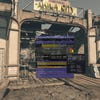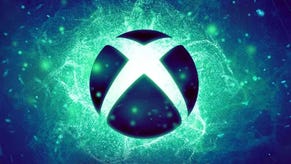In theory: is a Starfield performance mode viable on Xbox Series X?
We built a unique PC to find out if 60fps is possible.
The arrival of any highly anticipated console game brings with it a staggering level of expectation, especially when it's a first-party exclusive - like Bethesda Game Studios' Starfield. Looking back at the various pre-launch controversies, one of the biggest was the decision to cap the game at 30 frames per second when the majority of games released on Xbox Series X are attempting to target 60fps. With the final game in our hands then, the question is this: what are the chances of a performance mode on Microsoft's most powerful console? It's the first order of business in a DF Direct Special you'll see embedded a paragraph or two under these words.
Back in June, Bethesda confirmed the 30fps cap on consoles, with Todd Howard going on the record to say that "We prefer the consistency... I think it'll come as no surprise, given our previous games, what we go for - always these huge, open worlds, fully dynamic, hyper detail where anything can happen." Howard also mentioned that when the frame-rate cap is not in place, Starfield can run at up to 60 frames per second, according to the content.
So, how can we put this to the test? We built a unique PC designed to broadly match the capabilities of the Xbox Series X console. Recently, we reviewed the AMD 4800S Desktop Kit - a China-only OEM product based around the actual Xbox Series X SoC. The GPU portion is disabled, but we do get the CPU element, paired with 16GB of GDDR6 memory. There are faster clock speeds than Series X and more available cores to games, but far more of a limitation is the GDDR6 memory, typically used for graphics cards, not CPUs. Check out the full review because it throws up some fascinating results. Xbox Series X's CPU is indeed a Zen 2 processor, but it acts in very different ways to something like a Ryzen 5 3600 or Ryzen 7 3700X.
With onboard graphics disabled, the next challenge is to select a console-like GPU. There is no real equivalent to the Xbox Series X's 52CU-based RDNA 2 graphics core, but PlayStation 5 graphics performance is broadly similar to Xbox's, and it's there where we can find a close match. The Radeon RX 6700 (non-XT model) has the same 36 compute unit count as the PS5's GPU, the same 144 texture mapping units and the same 96 ROPs. Memory bandwidth is more constricted, but it has more on-die cache. Clock speeds are slightly higher but a quick tweak in MSI Afterburner was enough to take the RX 6700 down to the approximate 2.23GHz of the PlayStation 5's GPU.
Let's be clear here: our Frankenstein's Console isn't a ringer for either PS5 or Xbox Series X, but what it does do is replicate the unique architecture surrounding the CPU and it gives us broadly equivalent horsepower to the current generation of consoles. And while we can't unlock frame-rate in the way Bethesda can with its development builds, there's nothing stopping us doing this on PC. The next challenge? Getting our graphics settings as close to Xbox Series X as possible - you can read more about this when our big Starfield PC tech review 'drops' in the next day or so.
You can see my tests play out in the embedded video on the top of this page, but with the game suitably configured, the experiments could begin. Running at the same 4K output resolution with FSR 2 quality upscaling engaged (no dynamic resolution scaling active), unlocking the frame-rate revealed results that varied according to content, with Starfield delivering up to 60 frames per second as Todd Howard indicated. Interestingly, this happened in the enclosed environments of the first research lab mission. Space travel, which I expected to run smoother, operated at anything from 35fps to around 50fps. However, pretty much everywhere else, the game ran in a 30fps to 40fps no man's land.
And that's exactly what we should expect. Starfield is a complex game with complex systems. If the decision is made to target 30 frames per second locked, we should expect uncapped performance to be just above that in order to get the most out of the CPU and GPU, while leaving some overhead to ensure consistency throughout as much of the experience as possible. So, on as close to console settings as we could manage, on a machine that's as close to Xbox Series X as possible, it should come as no surprise to see this. But what if we dropped resolution to a Series S-style reconstructed 1440p instead?
Dropping resolution only, I retained the same settings otherwise (Series S has a few more nips and tucks). Re-running every one of my scenarios saw that Starfield would run at a minimum of around 40fps, while much more of the game operated at 60 frames per second. I wasn't surprised to the research station mission that run in the 50s lock to 60fps, but I was pleasantly taken aback to see the visually rich Neon location running locked at 60 frames per second. Space combat - in the section I tested, at least - also hit maximum frame-rate.
My takeaway? With the proviso in place that our Frankenstein's Console is not a complete match for Xbox Series X, there does seem to be evidence to suggest that there's enough CPU overhead left over to run much of the game at a 40fps minimum, suggesting that a 40fps mode for 120Hz displays might work. Additionally, while a fully unlocked performance mode may not get anywhere near to a consistent 60 frames per second, some users might find it valuable - and there's particular potential here for players with variable refresh rate (VRR) screens.
Whether Bethesda takes this road is, of course, unknown. In common with most pre-launch controversies, 30fps became a bit of a non-issue once users were hands-on with the game. It does the job and it is consistent - and it seems to be the case that most users understand why the frame-rate cap is in place. A game of this size, scale and scope simply isn't a good match for a 60 frames per second target. It's time to accept that consoles are mainstream systems with finite resources - and it's down to the developer to pitch their performance targets in line with their overall ambitions for the game.
Moving on, this testing accounts for a mere third of the DF Direct Special we're publishing today, so do watch and hopefully enjoy the video atop this page, which covers everything from the DLSS mod for the PC build and how it compares against AMD's bespoke FSR 2 integration, along with John Linneman's tips on tweaking HDR on both PC and Series X in a world where the game shipped with no HDR tweakables at all. We also tackle a range of questions from our backers on the Digital Foundry Supporter Program, which is always fun.
Next up? Alex is just about ready to share his PC tech review with us - and having previewed some of the content, it's going to be a good one!




























